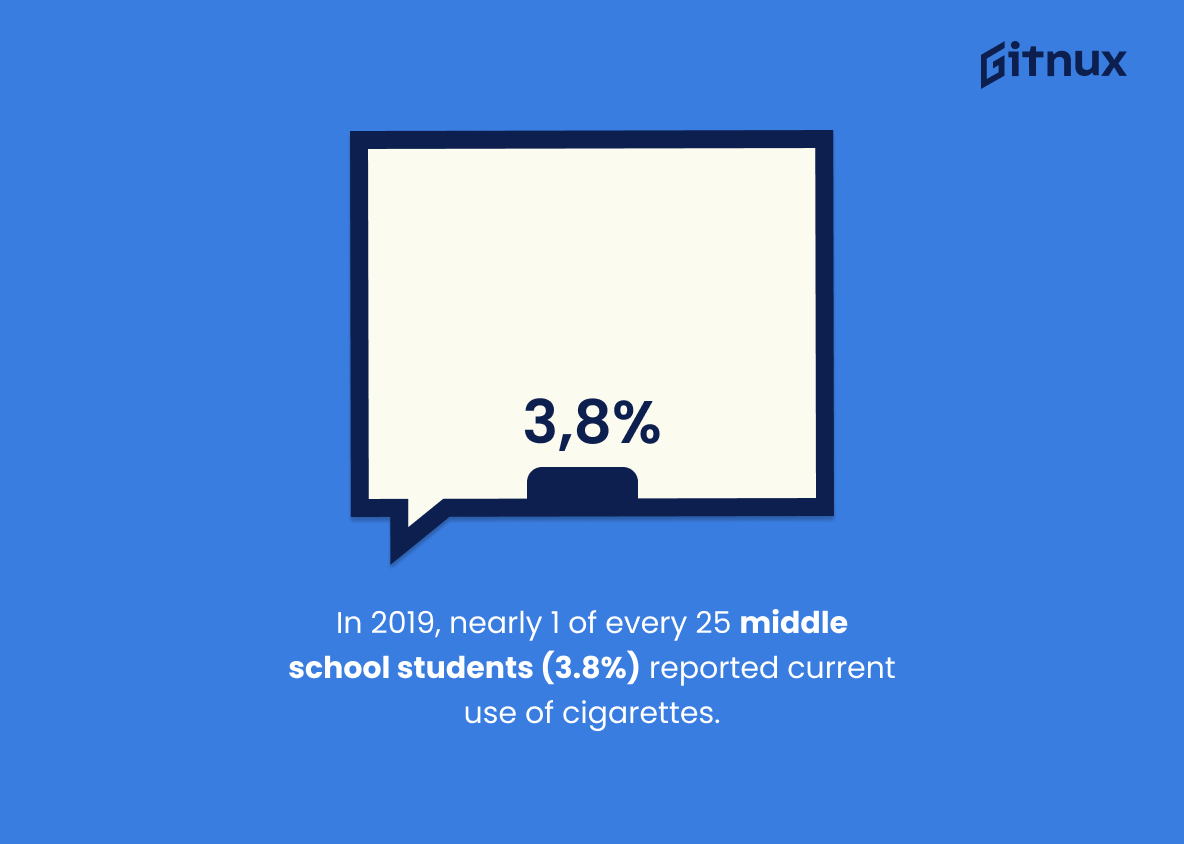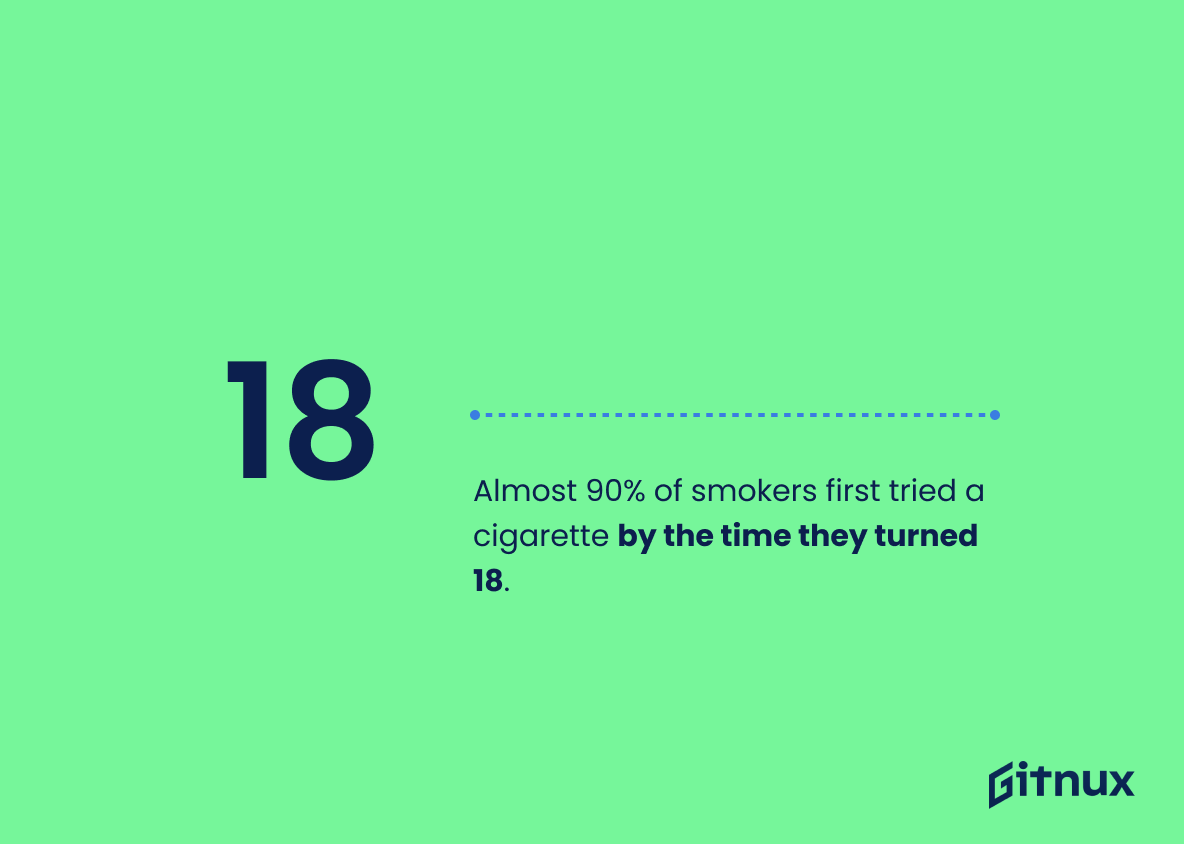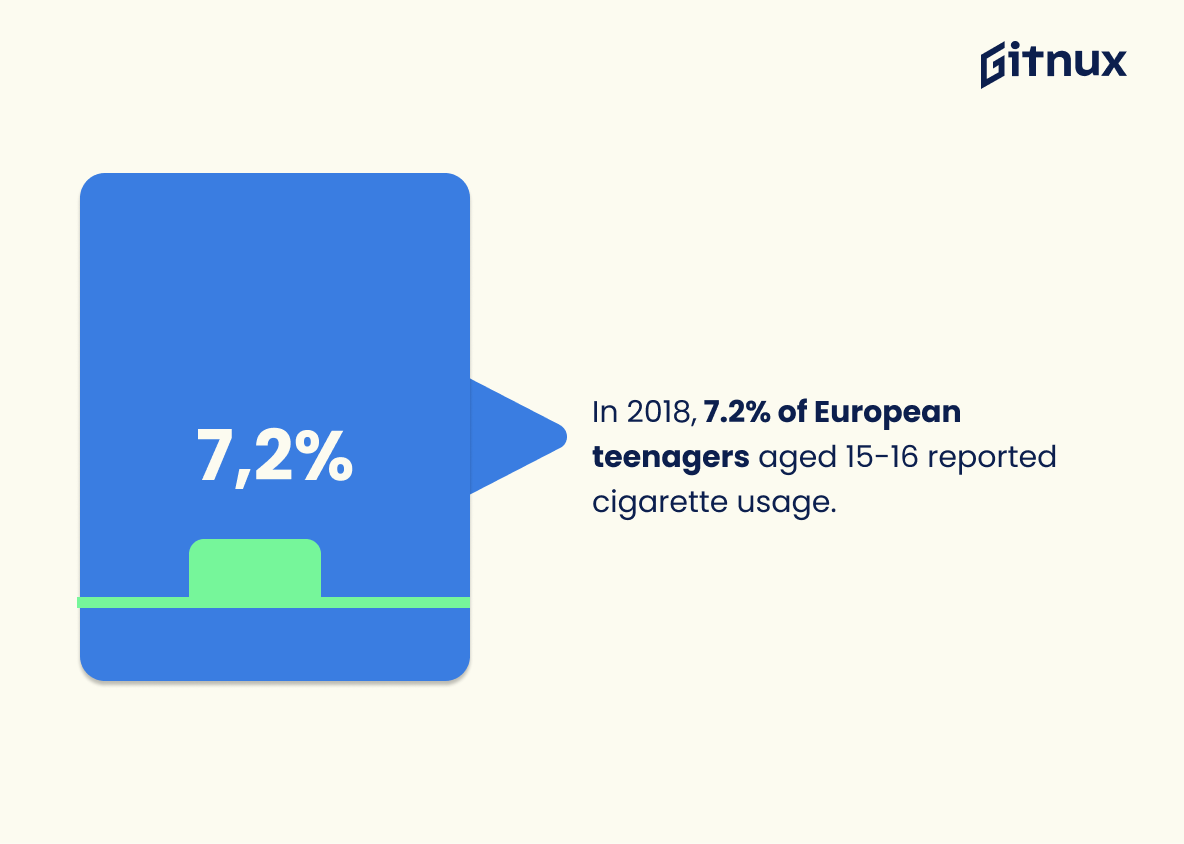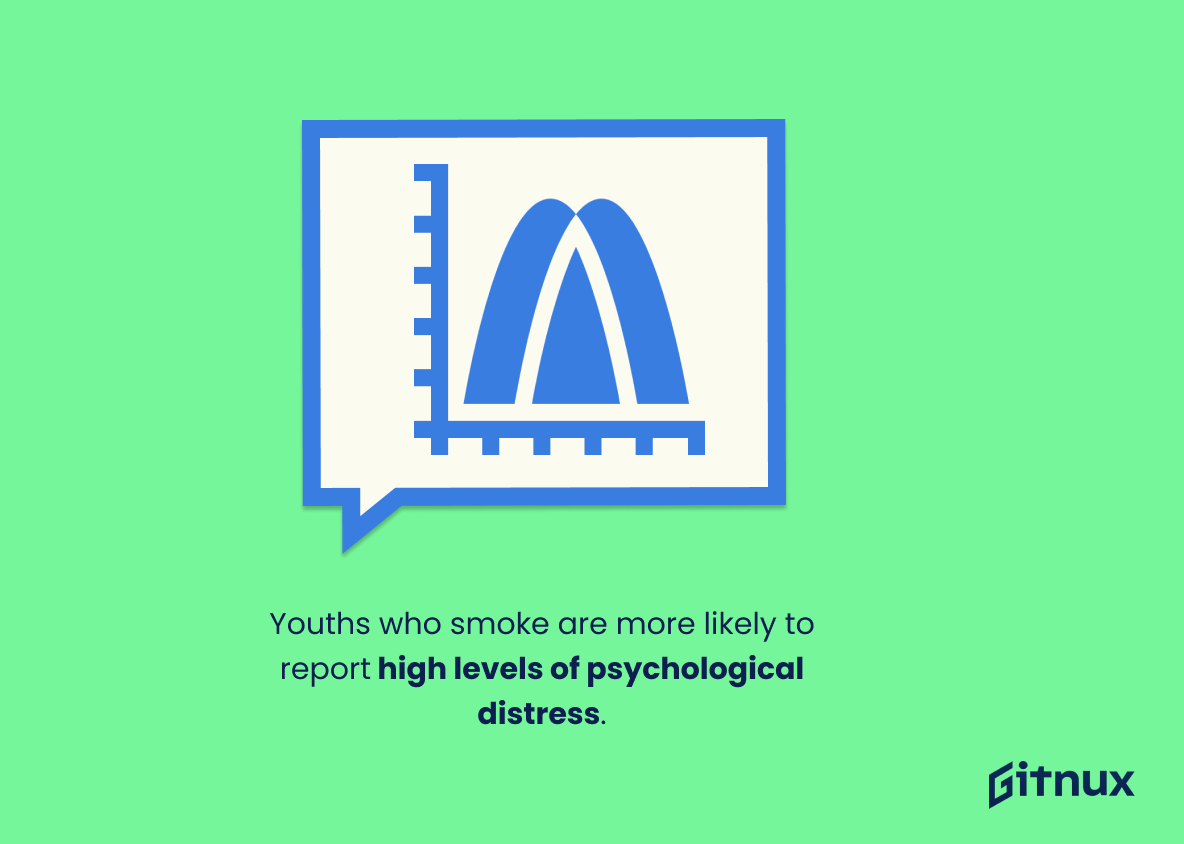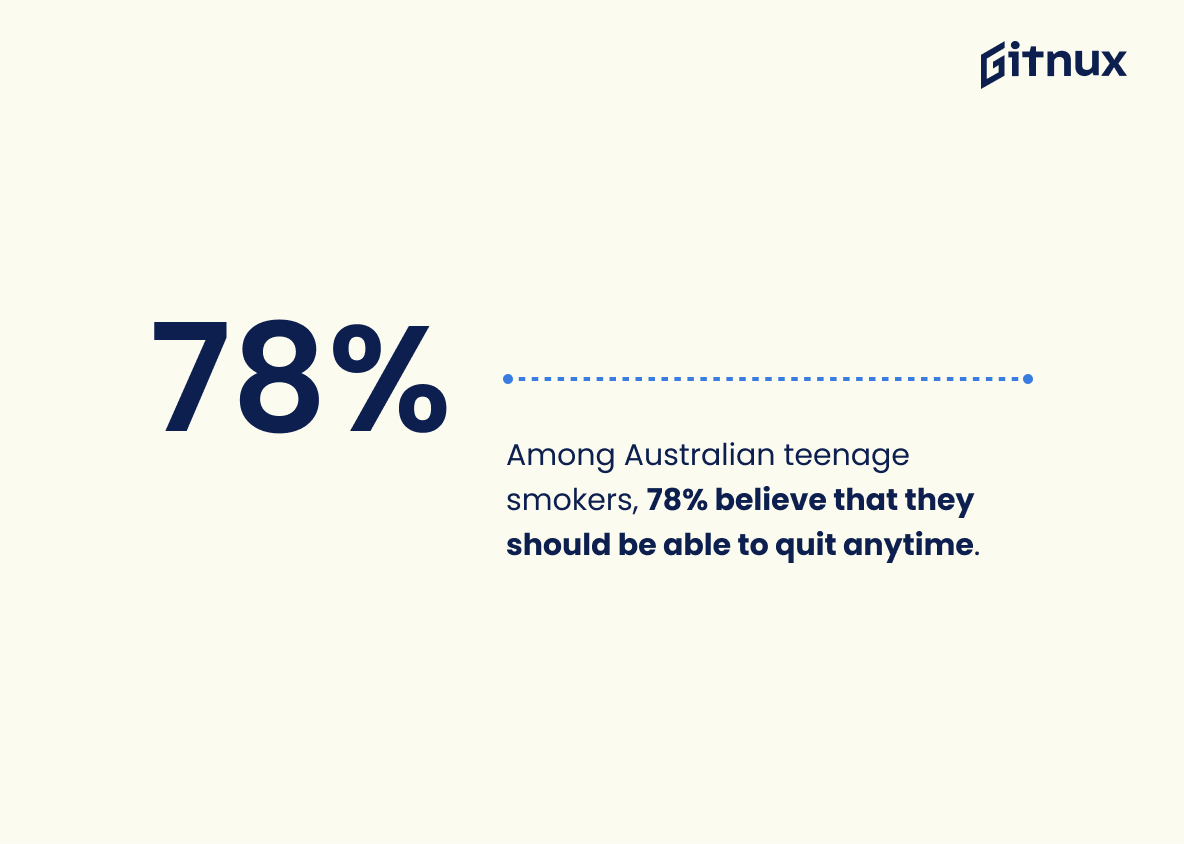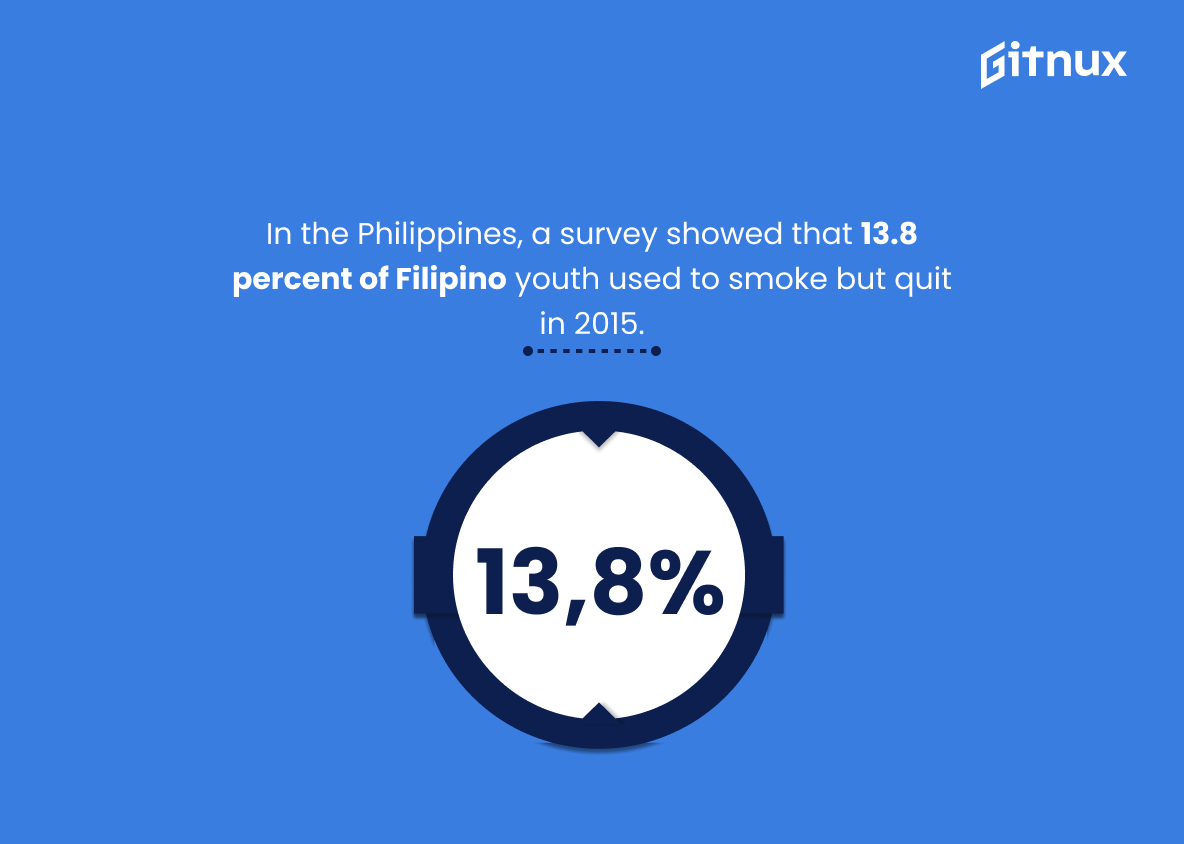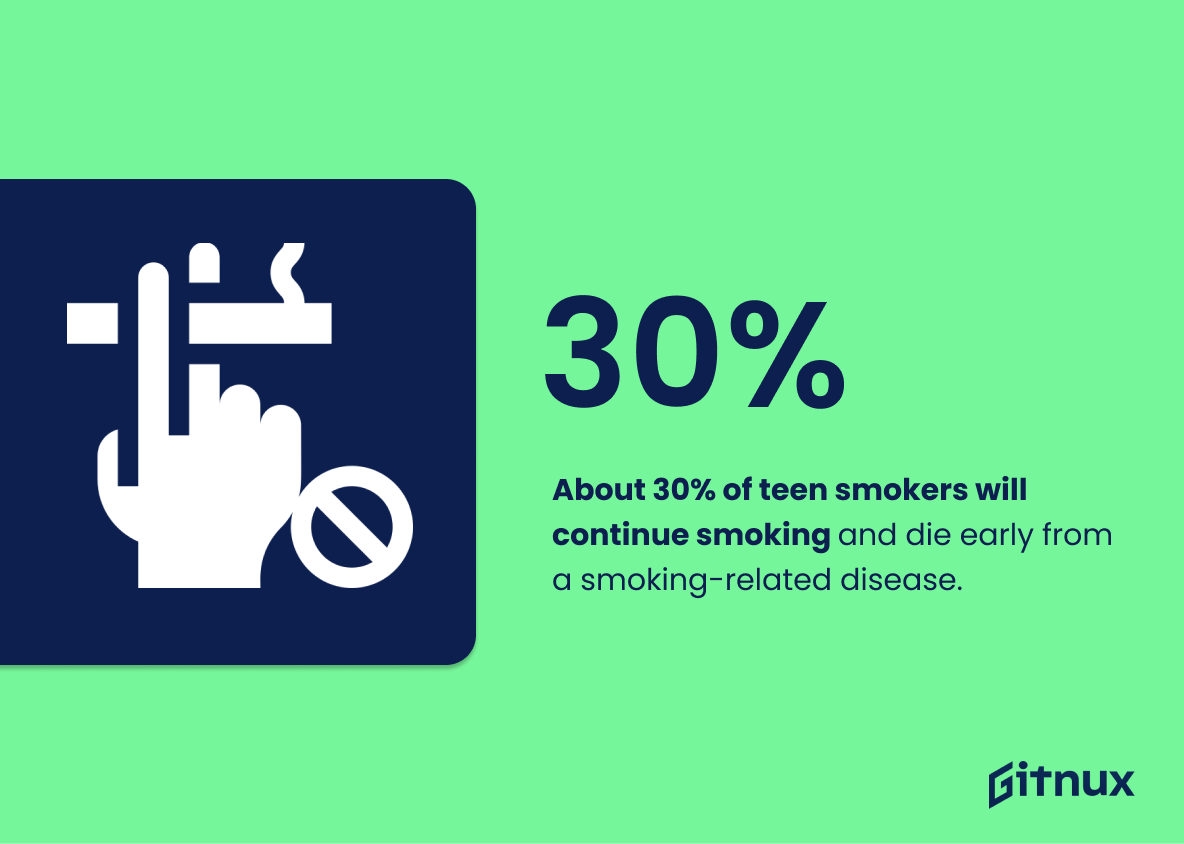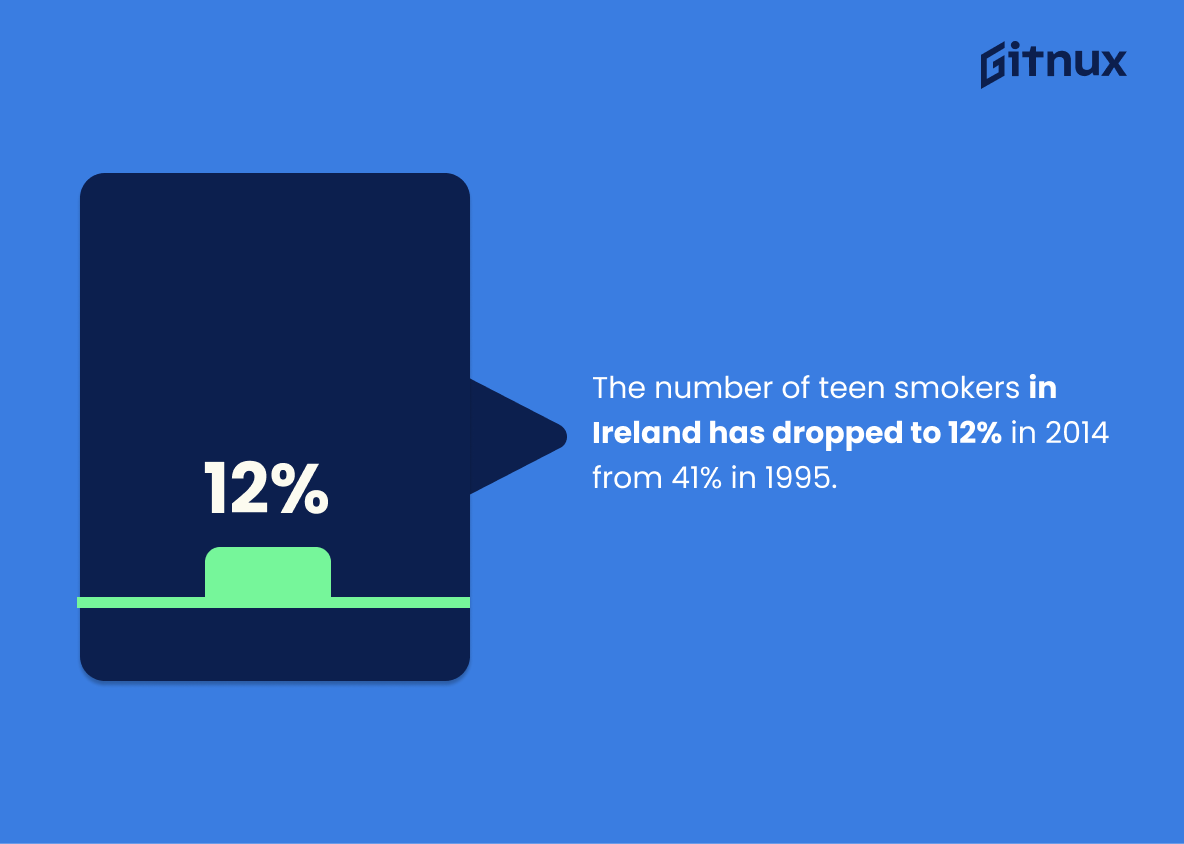Navigating the teenage years can be quite the rollercoaster. Among the many challenges these years present, tobacco use, specifically in the form of smoking, remains a significant concern. While regulations and public awareness campaigns have made strides in reducing overall tobacco consumption, teenage smoking is not entirely extinguished. This blog post dives into the harrowing world of teenage smokers, presenting a comprehensive mosaic of the current situation through compelling statistics. By shedding light on prevalent trends, causes, risks, and effects, we aim to disclose a vivid panorama of teenage smoking, a reality many youngsters live every day. Buckle up as we guide you through an enlightening journey built on hard facts and figures that underscore the scale of the issue and appeal for quicker, more effective actions.
The Latest Teenage Smokers Statistics Unveiled
Approximately 7.2% of high school students in the U.S reported current cigarette use in 2019.
In the world of teenage statistics, this key number – the 7.2% of U.S high school students who reported using cigarettes in 2019 – casts a clarifying light on the extent of tobacco use amongst adolescents. It stands as an unswerving reminder of the persistent issue of nicotine addiction, subtly weaving its way into the fabric of high school culture. In the broader narrative of a blog post on Teenage Smokers Statistics, it forms the crucial thread that enables readers to gauge the magnitude of this crisis. More importantly, it motivates us to delve deeper, question why this figure isn’t falling faster, and explore strategies that might help us bring this percentage down to zero. Ultimately, this statistic underscores the urgency to address teenage smoking, demonstrating that it is not a relic of the past, but rather a confronting reality of the present.
In 2019, nearly 1 of every 25 middle school students (3.8%) reported current use of cigarettes.
Unraveling the meaning behind the numbers, the 2019 statistic revealing that almost 1 in every 25 middle school students reported active cigarette usage is a cause for alarm. This nugget of information serves as a stark reminder of the prevalent issue among teenagers. Such statistics spotlight the stealthy creep of nicotine addiction within juvenile age groups. When a narrative such as a blog post about Teenage Smokers Statistics integrates this crucial insight, it vividly paints the far-reaching claws of smoking, emphasizing how the menace doesn’t discriminate even among middle school students.
The statistic serves as a wake-up call, compelling readers to not just see this as a number but as a looming health crisis. It invites parents, educators, health officials, and policy makers to take the baton of prevention and education before this percentage spirals out of control. Undoubtedly, this emphasizes the essential role of statistical data in not just presenting facts but in action-inducing societal conversations.
Almost 90% of smokers first tried a cigarette by the time they turned 18.
The significance of the astonishing fact that nearly 90% of smokers had their inaugural encounter with cigarettes before their 18th birthday cannot be stressed enough in understanding the landscape of Teenage Smokers Statistics. This compelling data point is an eyewitness to how the grim roots of nicotine addiction often get a foothold during adolescent years. Conditioned to the addictive rush during this critical period of brain development, teenagers become susceptible to continued use, shaping the trajectory of tobacco use in adulthood. This statistic serves as an urgent clarion call, necessitating the importance of proactive anti-smoking measures and education among youth. It shapes and fuels the war against teen smoking by spotlighting the period when intervention could potentially be most effective, creating a foundation for impactful solutions to counteract the epidemic of teenage smoking.
In 2018, 7.2% of European teenagers aged 15-16 reported cigarette usage.
Highlighting the statistic, ‘In 2018, 7.2% of European teenagers aged 15-16 reported cigarette usage’ underscores the alarming reality of smoking prevalence among our youth. This crucial number enables us to navigate the vulnerable terrains of adolescent behavior, particularly important when constructing prevention strategies. This will raise alarm bells for parents, teachers and policymakers alike, necessitating immediate intervention at home and school levels. Through the magnifying glass of this troubling statistic, our blog post uniquely illuminates the startling teen-smoking landscape we must vigilantly confront together.
Every day in the U.S., more than 1,600 youth smoke their first cigarette.
Unmasking the gravity of this fact, every illuminated dawn in the U.S. unlatches the doors to an alarming predicament. Over 1,600 young souls are drawn to ignite their first cigarette daily. This figure is not simply a chilly demographic; rather, it serves as a cautionary beacon in our discussion about Teenage Smokers Statistics. It supplies palpable evidence of the insidious creep of nicotine addiction amongst the youth, right in the midst of their formative years. Each number is a silent cry, highlighting the urgency for comprehensive preventive strategies and proactive interventions. Truly, etched within these numbers lies the heartbeat of our discourse, amplifying the need for a transformative action to snuff out such a harmful initiation among teenagers, before the ember burns too bright and too deep.
According to a 2019 survey, the prevalence of current cigarette smoking was higher among male high school students (8.1%) than female high school students (6.2%).
Diving into the depth of this statistic, we can recognize the significant gender-based smoking patterns among high school students, crucial for dissecting the Teenage Smokers Statistics issue. In 2019, male high school students, with an 8.1% smoking prevalence, surpassed their female counterparts, who had a 6.2% smoking prevalence. This highlights the urgency for customized preventive strategies that target not only teens in general but the gender-specific aspects that might be influencing this trend. Identifying these specific trends aids in designing effective awareness and prevention campaigns, aiding us to navigate the choppy waters of teenage smoking. This statistic quietly screams the importance of gender-specific solutions for cigarette smoking among teenagers.
Youths who smoke are more likely to report high levels of psychological distress.
Injecting life into this statistical observation reveals striking implications for our understanding of teenage smoking behaviors. By hinting at a correlation between youth smoking and reports of high psychological distress, this telling statistic shines a spotlight on the unfortunate fact that smoking is not merely a physical issue, but also a deeply psychological one. It suggests that the narrative around teenage smoking is far more complex and intertwined with their mental health status. Breaking it down, it allows us to peel back the layers, providing an invaluable hint to the root causes, potentially altering strategies towards prevention and intervention in aiming to extinguish the flame of tobacco use among adolescents.
Among Australian teenage smokers, 78% believe that they should be able to quit anytime.
In crystalizing our understanding of Teenage Smoking Statistics, a powerful revelation leaps off the page – by a staggering 78%, Australian teenage smokers hold the belief that quitting can be accomplished at any time. This is not merely an idle fact or a simple percentage. Instead it represents a significant point of view among this young demographic, colored by the shade of optimism, ignorance or perhaps underestimation of the struggle in overcoming nicotine addiction. Far from merely pegging the smokers as naive, this figure underscores the importance of re-engineering anti-smoking educational programs. It’s a clarion call for constructing comprehensive awareness campaigns that not just highlight the ill-effects of smoking, but also elucidate the harsh reality of nicotine addiction and the challenges it presents to quitting on a whim. Therefore, this statistic is a pivotal piece of the jigsaw that offers a unique perspective into the mindset of teenage smokers in Australia, setting the stage for more targeted and effective interventions.
In Canada, about 100,000 teens start smoking every year.
Underlining the gravity of this issue, a profoundly unsettling figure emerges from Canada – a staggering 100,000 teens ignite their first cigarette each year. This number serves as a stark reminder in our blog post on Teenage Smokers Statistics, highlighting the pervasive reach of this detrimental habit among our youth. It emphasizes the pressing necessity to implement proactive measures and better health education to curb this alarming rate of initiation into smoking. Through such statistical insights, we beckon not only a greater understanding of the scale of the issue, but also a call to action for all invested in the wellbeing of our younger generation.
In the Philippines, a survey showed that 13.8 percent of Filipino youth used to smoke but quit in 2015.
This compelling statistic illustrates a positive trend, illuminating a notable shift in smoking habits amongst Filipino teenagers. Depicting a significant 13.8 percent decrease in youth smokers in 2015, it implies successful anti-smoking initiatives or prevalent societal changes deterring this harmful habit. For a blog post on teenage smoking statistics, it presents an opportunity to explore and pinpoint contributing factors which led to this smoking cessation, potentially serving as a guide for other regions struggling with youth smoking. Additionally, it creates a broader understanding of global smoking habits, challenging stereotypes of smoking as a persistently increasing trend among the youth.
About 30% of teen smokers will continue smoking and die early from a smoking-related disease.
Painting a grim picture of the potential future for young smokers, this alarming statistic offer a shocking revelation: Nearly one-third of teen smokers may be shortening their lives due to smoking-related diseases. When looking at Teenage Smokers Statistics, this warning bell can’t be ignored. It not only quantifies the risk associated with early initiation of smoking, but also translates this risk into the stark reality of premature death. This adeptly underscores the urgent need for preventative initiatives, further tobacco control measures and intensified awareness campaigns targeted at our youth. The cigarette lit today could extinguish a teen’s future forever – that’s the invaluable cautionary tale this statistic narrates.
As of 2018, 18% of British young people aged 11-15 years had ever smoked at least once.
Shining a light on the realities of adolescent tobacco use, this intriguing bit of data unveils that nearly a fifth of British youths, aged between 11-15 years, had crossed paths with smoking experiences at least once as of 2018. Indeed, this statistic represents more than mere numbers on a page for any exploration into teenage smoking trends. It serves as a clear indicator of the prevalence of early smoking experimentation within the UK’s younger demographics, affording us a glimpse into the extent of exposure amongst this vulnerable age group. This valuable figure not only charts tangible evidence of the reach of the tobacco industry among minors but also helps in driving targeted initiatives and policies aiming to extinguish teenage smoking. In a blog post dissecting teen smoking scenarios, ignoring such pertinent information would be akin to trying to complete a puzzle with a core piece missing.
Among high school smokers, white teens are more likely to smoke than their black or Hispanic peers.
Digging deep into the demographics of high school smokers highlights the differential behaviors among ethnicities, unearthing intriguing patterns. The above statistic, pinpointing that white teens smoke more than their black or Hispanic counterparts, forms a crucial part of this tapestry. In a blog post about teenage smoker statistics, this data nugget serves as a vital learning and can be used to tailor anti-smoking campaigns and programs strategically. By identifying the higher risk group – white teenagers – it becomes possible to engineer targeted, effective interventions that are relevant and resonant. Moreover, this statistic also sparks important conversations about why these differences might exist, encouraging further investigation into socioeconomic, cultural, or environmental factors that may influence these behaviors.
So, it’s not just a statistic. Instead, consider it a stepping stone toward a well-informed, comprehensive strategy to combat teenage smoking, benefiting from a focused approach. The implications of this data reach far beyond the numbers, potentially instrumental in saving lives.
The number of teen smokers in Ireland has dropped to 12% in 2014 from 41% in 1995.
Peeling back the layers of this striking change in statistics, we find a captivating narrative of transformation among Ireland’s teenage population. In the time span from 1995 to 2014, the proportion of teenage smokers plunged from 41% to 12%. This palpable shift successfully illustrates the amplitude of change in smoking culture and habits among Ireland’s youth.
In the genomic blueprint of the blog post about Teenage Smokers Statistics, this datum is a dynamic strand illustrating a trend and contributing to an informed conversation about the variables that have influenced this outcome. Insights can be gleaned from this statistic, potentially unlocking methods of further deterring teenage smoking, not just in Ireland, but globally. Furthermore, it can serve as an empowering testament to the efficacy of public health initiatives and their potential for precipitating tangible, positive changes in community behavior.
Conclusion
The statistics on teenage smoking present sobering insights into the prevalence of this harmful habit among youth. The importance of continued research, effective communication, and targeted prevention efforts is undeniable. It’s vital that parents, educators, and policymakers understand these statistics and employ strategic measures to curb this alarming trend. Educating teenagers on the immediate and long-term health dangers of smoking, providing support for those trying to quit, and reinforcing anti-smoking campaigns could significantly lower these disturbing numbers. Together, we can inspire a healthier, smoke-free future for our teens.
References
0. – https://www.www.emcdda.europa.eu
1. – https://www.www.tobaccofreekids.org
2. – https://www.newsinfo.inquirer.net
3. – https://www.www.lung.org
4. – https://www.digital.nhs.uk
5. – https://www.www.canada.ca
6. – https://www.www.cancercouncil.com.au
7. – https://www.www.cdc.gov
8. – https://www.www.irishheart.ie

